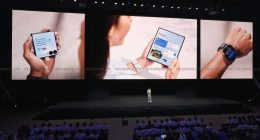Electronic beacons are really quite useful when it comes to navigation and location tracking. Up until now, there were only a handful of companies working on this technology, Apple’s iBeacon ecosystem being one of the few big names in the lot. But since Google has to be everywhere, it has now come down to work on beacons too.
The technology giant on Tuesday introduced a number of new products around Bluetooth Low Energy (BLE) beacons.
The new products, announced via a blog post on Tuesday, are said to include a new open beacon format, tools and APIs for building apps and services on top of beacons as well as a new developer-centric service for managing and monitoring your fleet of beacons.
The company says that after working with existing beacon hardware vendors like Bluvision, Estimote, Kontakt.io, Radius Networks and Signal360, they’ve learned a lot about the needs and the limitations of existing beacon technology. And using all this data, the company announced Eddystone, a new open format for beacons which the company has released under the Apache 2.0 open source license on Github.
This format, apparently, is meant to give developers a more robust and extensible way for working with beacons. It supports multiple frame types for different use cases, and also versioning to make introducing new functionality easier. Another pro is that this is a cross-platform format meaning that it is capable of supporting Android, iOS or any platform that supports BLE beacons.
Also, the company is releasing two new APIs: The Nearby API for Android and iOS that makes it easier for apps to find and communicate with nearby devices and beacons, such as a specific bus stop or a particular art exhibit in a museum, providing better context. And the Proximity Beacon API that lets developers associate semantic location and related data with beacons, stored in the cloud which will also be used in existing location APIs, such as the next version of the Places API.
Google, with this new approach, aims to unite beacons under a single hardware roof whilst simultaneously allowing diversity in the platforms front. An existing BLE beacon can be made Eddystone compliant with a simple firmware update. This new technology also helps make managing and securing your fleet of multiple beacons less of a chore.
Google’s own products are also getting promotions using this new beacon technology the company has to offer. Here’s what Chandu Thota, Engineering Director and Matthew Kulick, Product Manager had to say in the blog post about these improvements in Google’s own tech:
We’re also starting to improve Google’s own products and services with beacons. Google Maps launched beacon-based transit notifications in Portland earlier this year, to help people get faster access to real-time transit schedules for specific stations. And soon, Google Now will also be able to use this contextual information to help prioritize the most relevant cards, like showing you menu items when you’re inside a restaurant.





